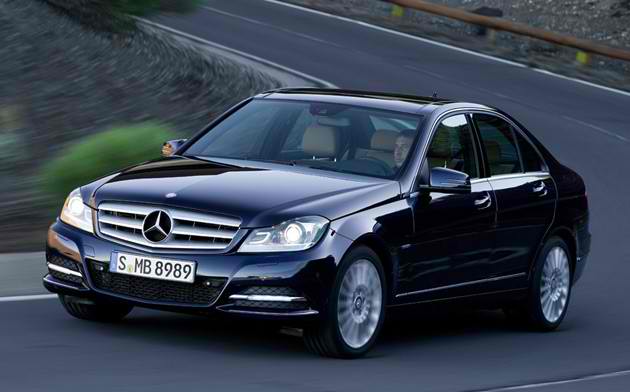Mercedes Responds to C-Class’s Poor Crash Rating
A new frontal crash test was developed by the Insurance Institute for Highway Safety and most luxury cars—including Mercedes-Benz—did not get a good grade.
According to CBS News, the test is designed to simulate what happened in a collision with a car, a pole or tree. At 40 miles per hour and at 25% of car’s front end, the cars are bumped into a barrier. In this test, only 3 out of 11 cars got a “good” grade while Mercedes earned “poor” score.
Mercedes-Benz head of Accident Research, Dirk Ockel, spoke to German news outlet Der Spiegel about the issue: “The test does not correspond to the real accident, a collision on headlight width is statistically according to our data is not significant”. He further explained, “When two cars collide so they hook themselves into each other. If you had put on the corner of a deformable obstacle corner, the results would probably realistic. Of course we will deal with it because either way, customers are confused by the results. ”
MB forum user vliou contacted MB of Canada about the crash tests getting this as a response:
The Insurance Institute for Highway Safety (IIHS) has run a series of tests called “small overlap crash tests”, in which vehicles are driven at 64 km/h, with an overlap of 25%, against specially formed rigid barriers.
We would like to make the following statement on the matter:
Our safety philosophy rests on attaining exact knowledge of the conditions of real accident situations that have been tested over several decades, the results of which have helped formed our vehicle production practices for years. This happens independently of ratings. The requirements we place on our vehicles regarding crash performance are considerably higher than those that are currently legally required worldwide.
The test configuration in question is well-known to us from real accident situations. As a general rule, collisions of this type are rare. In the event that two vehicles collide frontally with this small overlap, a completely different deformation pattern occurs. Deformations like those shown in the IIHS test only occur in collisions with rigid structures.
Our aim is, as it has always been, to orient our safety design toward real accident situations.
We would welcome initiatives from ratings agencies that are, themselves, committed to this philosophy.
This result may affect buying decisions, but Mercedes definitely clarify the issues with their customers. We’ll let you know when they release further statements.
What do you think of MB’s response? Tell us your take in the forums!

